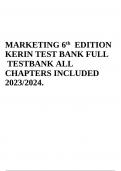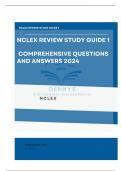Class notes
Statistiek Voor Bedrijfswetenschappen KULeuven Schakeljaar Handelswetenschappen
- Course
- Institution
Dit document bevat volledige en duidelijke notities van alle lessen van het vak Statistiek voor Bedrijfswetenschappen van het Schakeljaar Handelswetenschappen gegeven door Patrick Wessa in KULeuven Antwerpen. Ik behaalde op mijn examen in januari 2023 (eerste examenkans) 12/20
[Show more]












